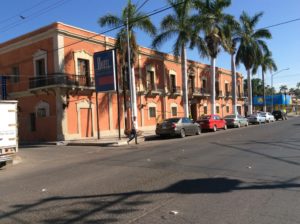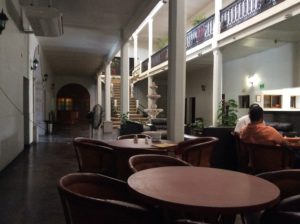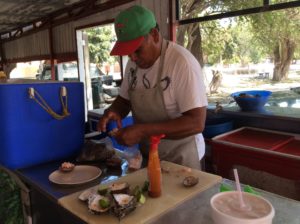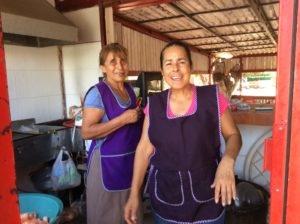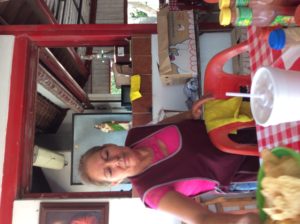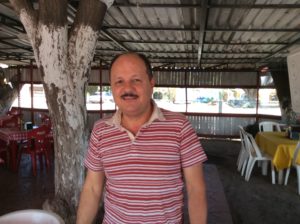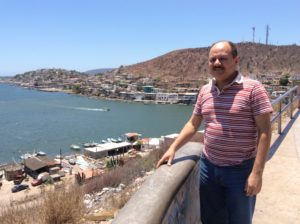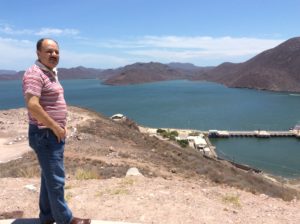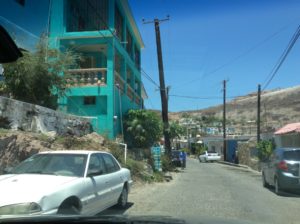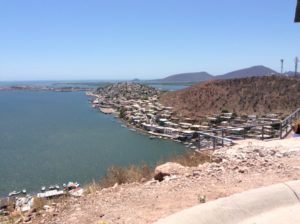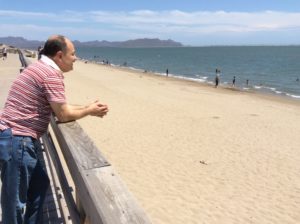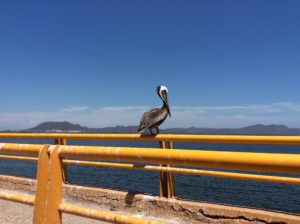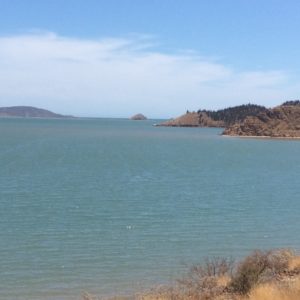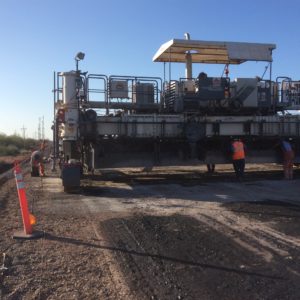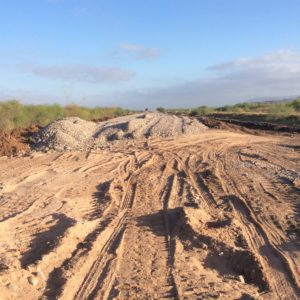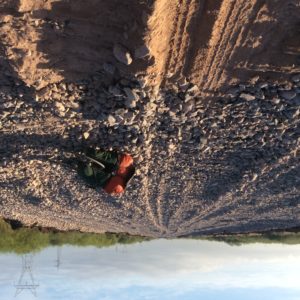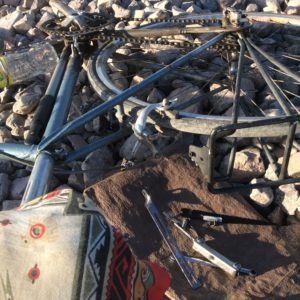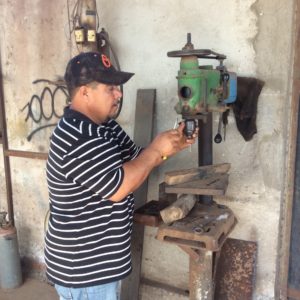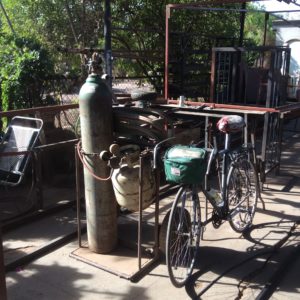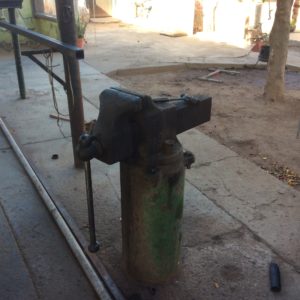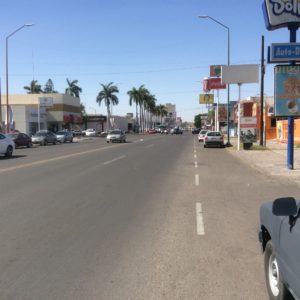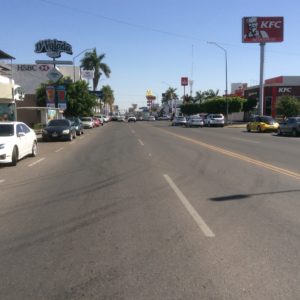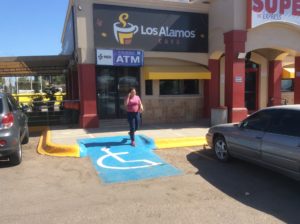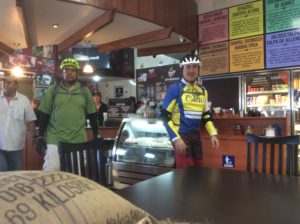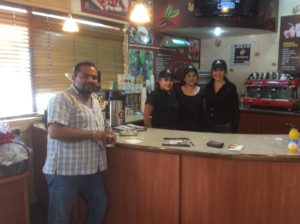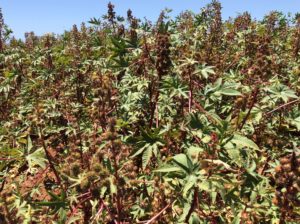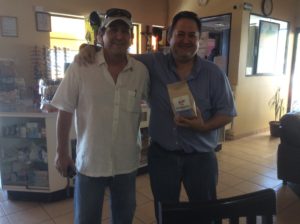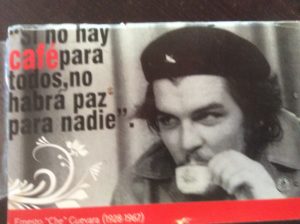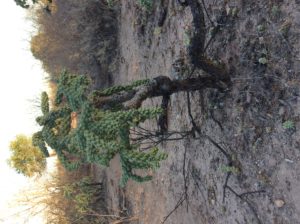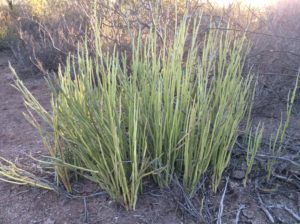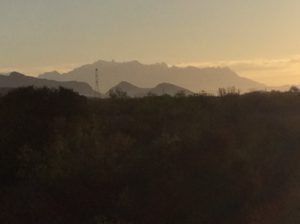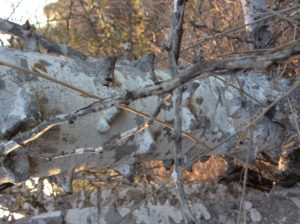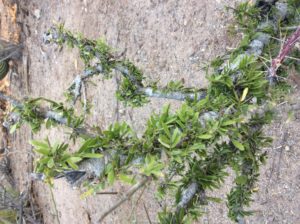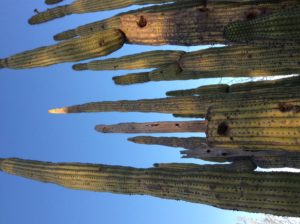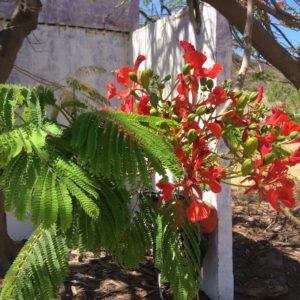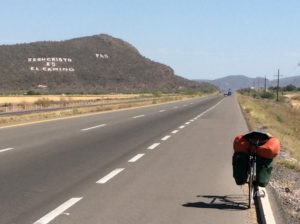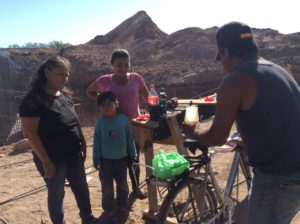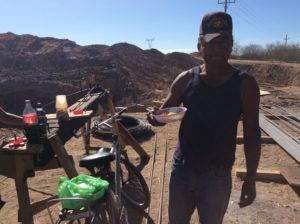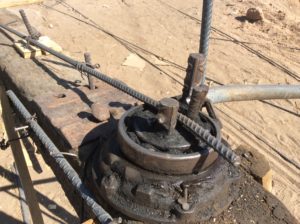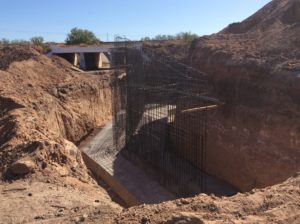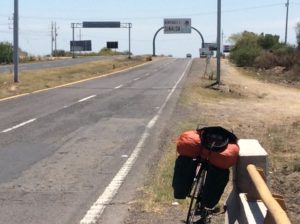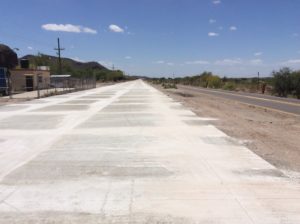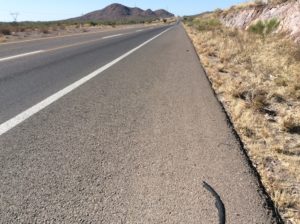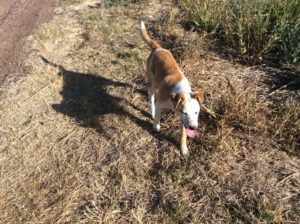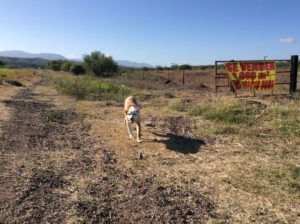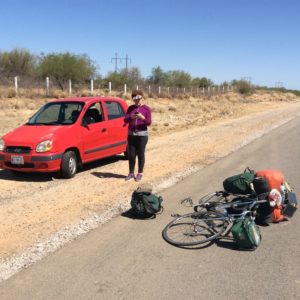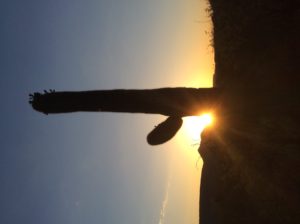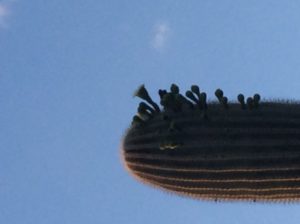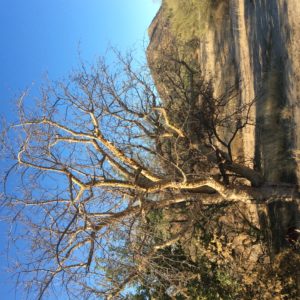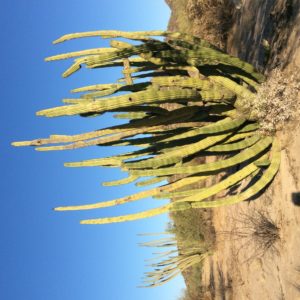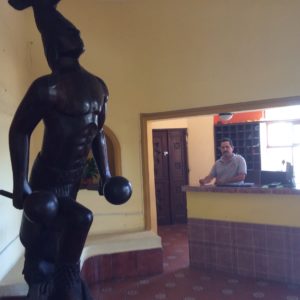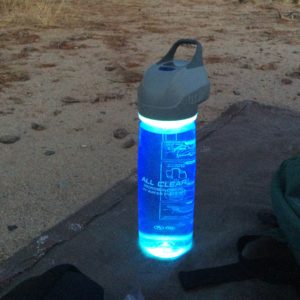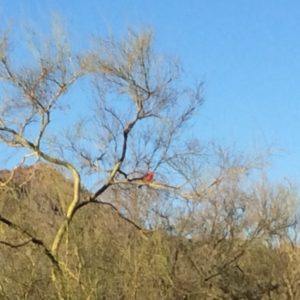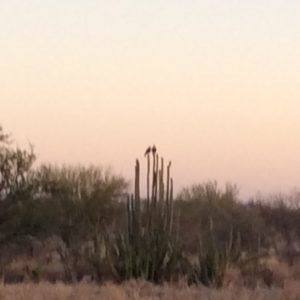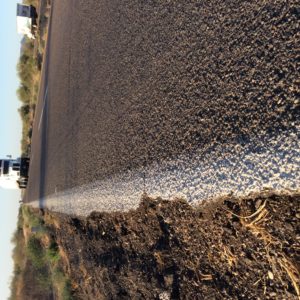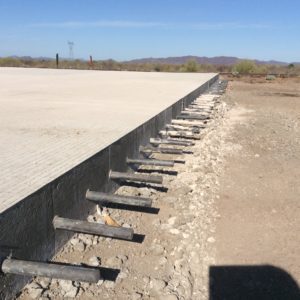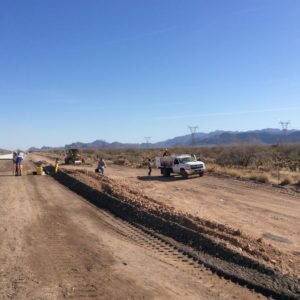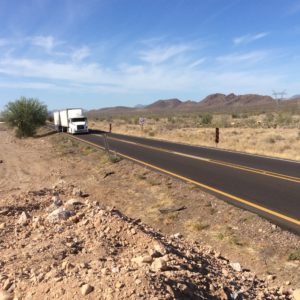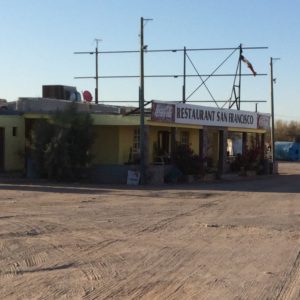May 23, 2016
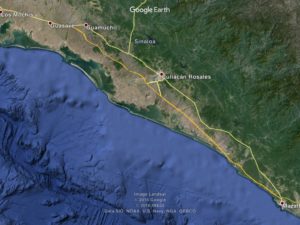
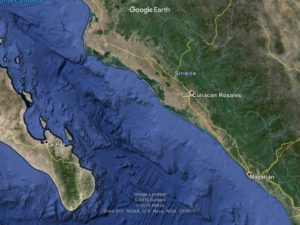
I left Los Mochis the following morning at first light and had easy miles with mostly good shoulder and no wind. Wind patterns since about Hermosillo have been calm mornings gradually becoming a crosswind coming off the ocean towards afternoon. More often than not the crosswind has a component of headwind. Between the towns of Guasave and Guamúchil the original highway splits off the freeway inland with the two running roughly parallel all the way to Mazatlán. I decided to try the old road as it looked better for camping possibilities running more in foothills. This made for a few more hills to climb but not too bad. Too often though there were shoulderless stretches. I did find a good camp sight but at Culiacán got back on the freeway. The freeway here is about like riding I-5 up the San Joaquin Valley in August- a hot, humid, flat, agricultural landscape and heavy traffic. Boring as it gets but you make good time.
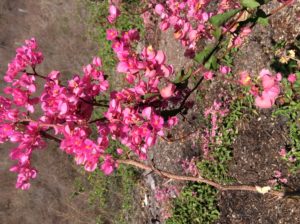
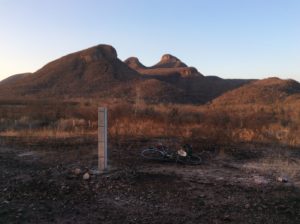
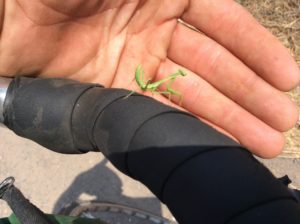
I had back-to-back 75 mile days and felt pretty good, but then one morning after sleeping at the edge of a mowed cornfield, Moctazuma came to visit. The day started out OK, what’s a little diarrhea, but by about noon I was knackered. Unbeknownst to me, I was also on a stretch that had no services for 60 miles. There has always been something every 20 or 30 miles and I had gotten enough accustomed to it that I stopped asking about what lay ahead. Fortunately I had enough water. I was down to a small piece of nearly rancid cheese, one hormiga stenched tortilla and a can of refried beans, but food didn’t really matter because I had no appetite. I just kept getting weaker and weaker as the day went until I finally stopped at the shade of an overpass and, with trucks pounding by no more than fifteen feet away, laid down in the dirt and fell into a delirious sleep for about three hours. The good news was that flies and ants don’t like to get this close to the moving traffic either.
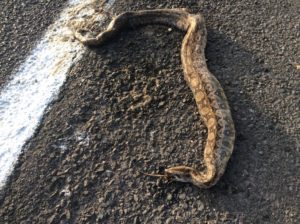
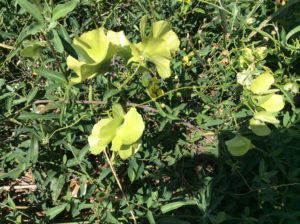
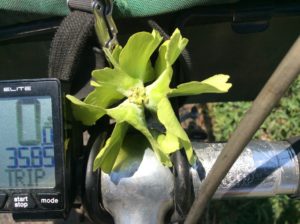
The sun finally reached around and I got up and rode another six miles to the shade of a tree. Now I was a comfortable 40 feet from the highway but the flies and ants were back. About this time I was having hallucinations of Debbie and Graham, or Cecilia, coming to the rescue. Two more hours of sleep and I pedaled again. It was getting towards evening and amazingly I had covered over 50 miles for the day. Still no services in sight. I pulled into a buggy gravel pit with a water filled bottom and pitched the tent. I have with me “the latest” in Thermarest sleeping pads, which weighs next to nothing and is rediculasly comfortable, but this model really needs an air compressor to blow it up. I also have a short piece of insulite that if thrown out on a sandy piece of ground works well enough for the dead tired. The insulite’s what I use most of the time. No sand to be had in the gravel pit and I didn’t relish the idea of sleeping on rocks in this condition. It took every ounce of strength I had left to blow the damned thing up but was glad at least for that bit of luxury.
The night didn’t go well. There were many trips out of the tent that I soon discovered went best when no clothing was worn. How a tee shirt could be affected is indeed a high level physics problem. Dressed such you are at the mercy of the bugs. In the morning I had no choice but to load the bike and ride. In 6 miles I came to a Pemex station, Mexico’s national gas distributor, and the accompanying Oxxo (ox-so) that has a slightly worse food selection than a 7-Eleven. I got a coffee and a carrot cake that went down OK. Nobody knew of any hotels. I was considering writing on a piece of cardboard $150 (i.e. 150 pesos- they use the dollar symbol as well) for a ride to Mazatlán since $150’s what I had in my wallet. That’s about $9. But feeling better after the cake, I bought a couple of sandwiches, topped up with water and rode on. I found it to be a fraction less energy to sit on the bike and pedal at some minimum speed than to sit on the curb at Oxxo propping my head up with my hands.
After about ten miles I knew I could make the remaining 30 into Mazatlán by just taking it as slow as possible. But then a sign said “hotel next right” and I took that as a bird in hand. I was at a beach town called Celestino Gasca that was more touristy and consequently expensive. Money didn’t matter at this point and I checked into the Villa Celeste RV Park and Hotel. Comparetivly expensive, it was still only $40 a night. The owner was Noa Rubio, who spoke English, and his place was a slice of paradise where I traded the sound of pounding traffic and jake brakes for ocean surf. Add to that I was his only custumer and his wife was a doctor.
I have to mention a train trip I took in about 1978 or 9 from Nogales to Mexico City where a couple of friends and I climbed the volcanoes Orizaba and Popocatepetl. Orizaba’s the third highest point in North America after Denali and the Yukon’s Mt Logan. Taking that train was quite an experience for three untraveled kids not too long out of high school. Along the way there was one place that the train went close to the ocean and you could see the surf. As I crossed some railroad tracks leading to the RV park I realized this was part of that stretch. I haven’t thought of that image in recent memory and triggering it here was a sort of dejavu- it’s been over 35 years. The passenger train I’m told no longer runs.
I ended up staying three nights at the hotel. Didn’t even get out of bed the second day. Noa brought me bottles of water and some electrolyte powder to mix with some of it. His wife gave me some diarrhea meds. The second night they made me a soup of nothing but boiled rice. Bland as it was, it was just what I needed. The third day I was up and around but set out on the fourth feeling almost as bad as when I arrived. Felt like I had to keep moving.
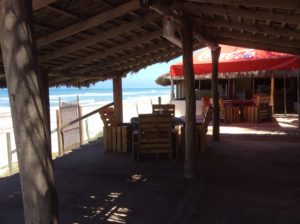
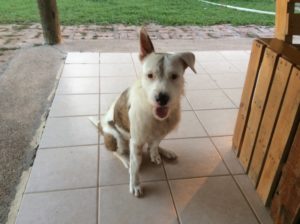
Infusing myself back into the arteries of a world on the move wasn’t easy after the beach hotel, especially when not yet up to par. It turned out Mazatlán was more like 50 miles from Celestino and it was a tough day getting there. Crossed the Tropic of Cancer a few miles before Mazatlán but surprisingly there were no signs for it. Having lost the early start I did three sweltering hours in the afternoon sun and could hardly talk when I checked into a hotel at Mazatlán. $18 bucks but once again clean and air conditioned. One thing about hotels here is that they’re all wall-to-wall tile and much more sanitary by that feature alone.
After a late morning at the hotel I headed to downtown Mazatlan looking for a bike shop. In Logan I had made some sheet metal strips that were put between the tube and the tire where the tire meets the road making them puncture proof. These work well enough for several hundred miles but eventually begin to fragment due to continual bending at the contact point. Thermal expansion may play a roll as well. I’ve seen tubes with something similar attached right to the tube but they were always cumbersome. A countinuous ring of narrow Teflon may be a good solution and you could easily transfer it from tire to tire as they wear out- someone should work on it. Anyway, since abandoning the strips there have been a few flats and I wanted to get another patch kit as well as a spare tube so long as I was in a city.
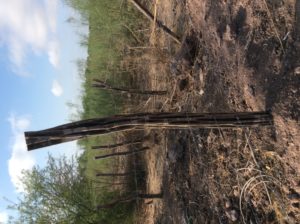
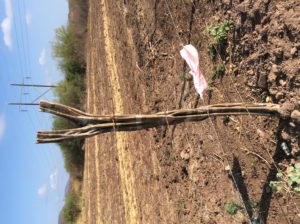
So I descended into the bowels of Mazalán, found a shop and climbed back out again. The “El Centro” of any of these cities can really be chaotic with roads narrow and unpredictable. Mazalán has about a half million people- buses and cars are everywhere. Anyway, bouncing along a bumpy street I lost a pannier and didn’t know it. Within a 1/2 mile I noticed it was missing and immediately remembered someone whistling loudly but in the traffic I didn’t dare turn my head. I went back to that spot but the pannier was gone. It turns out to not have had anything too vital- lost the fancy Thermarest and a pair of binoculars. Passport, IPad and money related things are intact.
On the positive side I’ve been carrying these hiking shoes that I haven’t worn since Utah and might not need again till the Andes. The stove and fuel went- so long morning coffee- but that’s a pretty cumbersome apparatus for something I can always get at the next Oxxo. I pretty much have to acknowledge that the paved road and the grocery store are what make this kind of travel possible. Well, the paved road, the grocery store and this little plastic Visa card. Even what I’m considering long distances between towns are easily made possible with a gallon of water and some sandwiches. So I’m lighter now but really just as functional. I’ll need to rethink how I load.
After a short day of riding I’m a little beyond Mazatlán in a back street hotel in the town of Villa Union. A little more colloquial, but it’s only about $9 a night. Tomorrow I start for Tepic.
